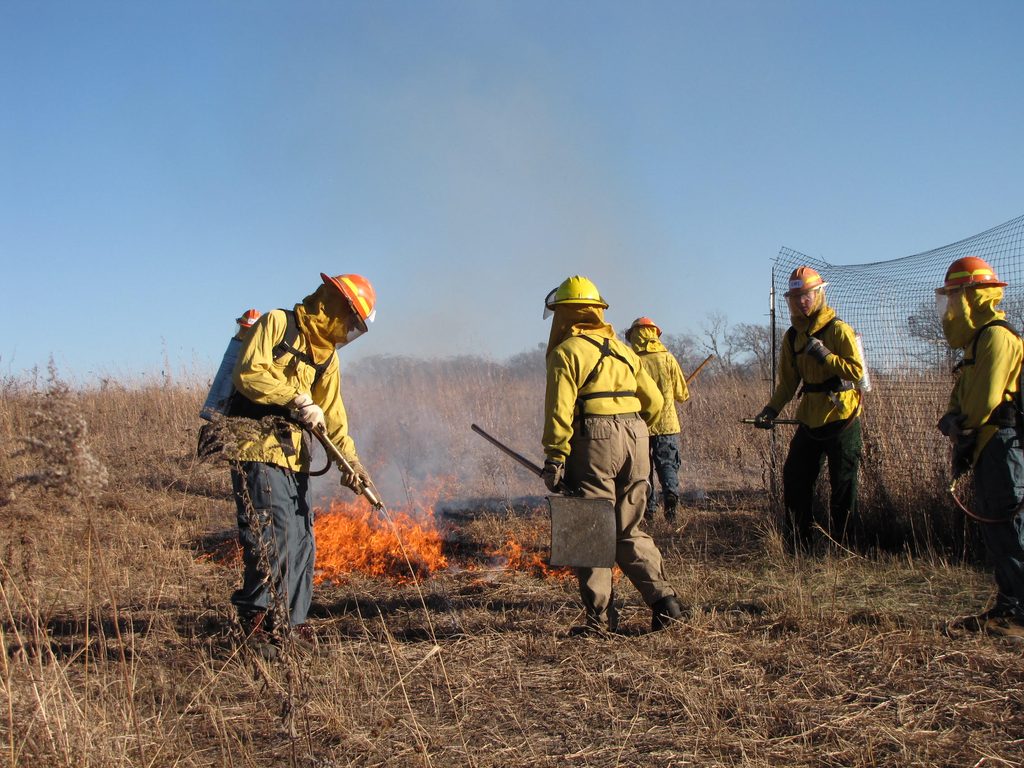It’s spring, and that means that some parts of the Arboretum will be burned! Arb staff conduct prescribed fires every spring when the weather is dry but plants are not yet green, and the pieces of prairie that can be burned see fire about every 4 years.
The soils and plants of the prairie love fire because it reduces accumulating biomass, makes nutrients available and cycles them, keeps large trees from taking over, kills invasive plants, changes microbes, clears space for new seeds to grow, and makes the growing season earlier because of the warm, blackened land. Native prairie plants are adapted to fire, and can survive because they grow deep roots. Native trees have thick, fire-proof bark that protects them, and small mammals in the prairie know to either flee or escape the heat in the depths of their burrows. Sometimes you might see a singed mouse, but they are better off in the long run!
Our landscapes have loved fire for over 10,000 years, and humans have contributed to that relationship for the past few thousand; many Indigenous peoples regularly shaped the landscape with fire for many reasons, including but not limited to driving herds of game animals, encouraging grazing grasses for herds, cultivating specific trees to support culturally important birds, clearing travel routes, and making long-distance signals. Although our relationships with the land have changed considerably, we still provide care for it and our native plants by burning every spring.
—Klara Gabriela Heuchert ’22, for the Cole Student Naturalists


Add a comment